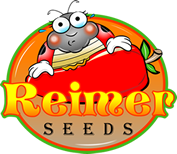Non-GMO Participant Pledge IT'S HERE - ROLLING BACK PRICES TO PRE-2020
ALL ITEMS ON SALE NOW - MAGA PRICING!
ALL ITEMS ON SALE NOW - MAGA PRICING!
Search store Close
- My accountMy account Close
- Wishlist (0)
Shopping cart Close
You have no items in your shopping cart.
Menu Close
- Vegetables
- Back
- Emergency Survival Seeds Kits
- Artichokes
- Arugula
- Asparagus
- Beans
- Beets
- Broccoli
- Brussels Sprouts
- Cabbage
- Cantaloupes & Melons
- Cardoons
- Carrots
- Cauliflower
- Celeriac
- Celery
- Chicory
- Collards
- Corn
- Corn Salad
- Cotton
- Cover Crops
- Cress
- Cucumbers
- Eggplants
- Endive
- European Greens
- Gourds
- Gourmet Vegetables
- Grains
- Jicama
- Kale
- Kohlrabi
- Leeks
- Lettuce
- Mustard Greens
- Okra
- Onions & Shallots
- Oriental Greens
- Oriental Vegetables
- Parsnips
- Peanuts
- Peas
- Peppers Hot
- Peppers Sweet
- Pumpkins
- Radishes
- Rhubarb
- Rice
- Rutabaga
- Salsify
- Spinach
- Sprouting Seeds
- Squash
- Strawberry
- Sugar Cane
- Swiss Chard
- Tomatillo & Ground Cherry
- Tomato
- Trees
- Turnip Greens
- Turnips
- Watermelons
- New Items
- All America Selections Winners
- Cold Tolerant
- Container Gardening
- Courtyards, Desks & Patio Gardening
- Drought Tolerant
- Giant Vegetables
- Heirloom
- Heat Tolerant
- High Humidity
- Self Pollinating Vegetables
- Wildlife Forage
- World Record
- Country of Origin
- Herbs
- Flowers
- Hydroponic
- Greenhouse
- Vegetables
- Back
- Emergency Survival Seeds Kits
- Artichokes
- Arugula
- Asparagus
- Beans
- Beets
- Broccoli
- Brussels Sprouts
- Cabbage
- Cantaloupes & Melons
- Cardoons
- Carrots
- Cauliflower
- Celeriac
- Celery
- Chicory
- Collards
- Corn
- Corn Salad
- Cotton
- Cover Crops
- Cress
- Cucumbers
- Eggplants
- Endive
- European Greens
- Gourds
- Gourmet Vegetables
- Grains
- Jicama
- Kale
- Kohlrabi
- Leeks
- Lettuce
- Mustard Greens
- Okra
- Onions & Shallots
- Oriental Greens
- Oriental Vegetables
- Parsnips
- Peanuts
- Peas
- Peppers Hot
- Peppers Sweet
- Pumpkins
- Radishes
- Rhubarb
- Rice
- Rutabaga
- Salsify
- Spinach
- Sprouting Seeds
- Squash
- Strawberry
- Sugar Cane
- Swiss Chard
- Tomatillo & Ground Cherry
- Tomato
- Trees
- Turnip Greens
- Turnips
- Watermelons
- New Items
- All America Selections Winners
- Cold Tolerant
- Container Gardening
- Courtyards, Desks & Patio Gardening
- Drought Tolerant
- Giant Vegetables
- Heirloom
- Heat Tolerant
- High Humidity
- Self Pollinating Vegetables
- Wildlife Forage
- World Record
- Country of Origin
- Herbs
- Flowers
- Hydroponic
- Greenhouse
CLICK HERE TO LEARN MORE
FAQ & Answers
We ship world wide
CONTACT US FOR MORE HELP
Reimer seeds has over 5,000 quality vegetable, flower, and herb seeds for the home gardener and market growers. We do not sell any Genetically Modified seeds. This year we reduced our prices on many items, added new items, and have added additional bulk items by the ounce and pounds! Take time to review our impressive Online Seed Catalog. Sorry, we do not have a printed catalog to mail you. Plan your garden, and then order your varieties for this upcoming season. Please check back often, as we add new items regularly. If you don’t see an item you want you can always email us and we’ll see if we can bring it into stock!
Newsletter
Wait...
Located & Shipped from the USA
Powered by nopCommerce
Designed by Nop-Templates.com
Copyright © 2026 Reimer Seeds. All rights reserved.

